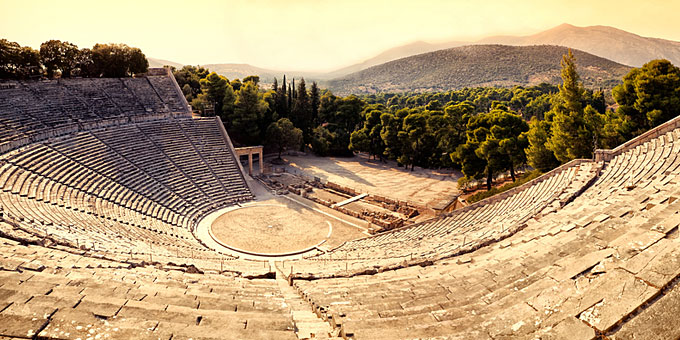A majestic place so close that you must visit. Ancient theatre build in the 4th century BC. The theatre is marveled for its exceptional acoustics, which permit almost perfect intelligibility of unamplified spoken word from the proscenium to all 15,000 spectators, regardless of their seating.
The prosperity brought by the asclepeion enabled Epidaurus to construct civic monuments, including the hugetheatre that delighted Pausanias for its symmetry and beauty, used again today for dramatic performances, the ceremonial hestiatoreion (banqueting hall), and a palaestra. The ancient theatre of Epidaurus was designed byPolykleitos the Younger in the 4th century BC. The original 34 rows were extended in Roman times by another 21 rows. As is usual for Greek theatres (and as opposed to Roman ones), the view on a lush landscape behind the skênêis an integral part of the theatre itself and is not to be obscured. It seats up to 14,000 people.
The theatre is admired for its exceptional acoustics, which permit almost perfect intelligibility of unamplified spoken words from the proscenium or skēnē to all 14,000 spectators, regardless of their seating (see Ref., in Greek). Famously, tour guides have their groups scattered in the stands and show them how they can easily hear the sound of a match struck at center-stage. A 2007 study by Nico F. Declercq and Cindy Dekeyser of the Georgia Institute of Technology indicates that the astonishing acoustic properties may be the result of the advanced design: the rows of limestone seats filter out low-frequency sounds, such as the murmur of the crowd, and amplify high-frequency sounds from the stage.
